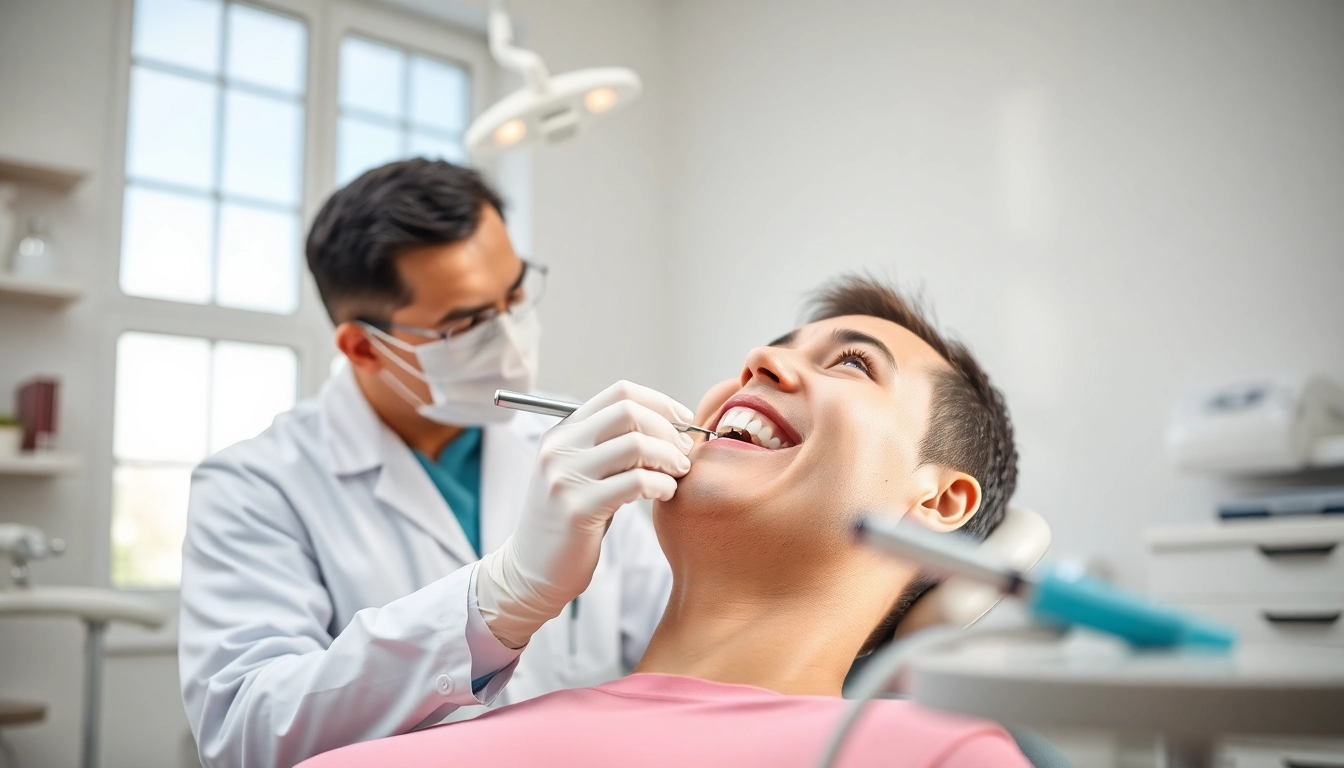Understanding Dental Cleanings
Dental cleanings are an essential aspect of oral health that can significantly impact overall wellness. Regular dental cleanings not only prevent cavities and gum disease but also play a crucial role in maintaining a bright and healthy smile. Many individuals may be unfamiliar with the full scope of what dental cleanings entail and why they are necessary for dental health. In this comprehensive guide, we will explore everything you need to know about dental cleanings, including their importance, the cleaning process, types of cleanings, and how to choose the right dental practice for your needs. For those seeking more information on effective dental cleanings, this guide aims to provide helpful insights.
What are Dental Cleanings?
Dental cleanings are professional, preventative dental services performed by a dental hygienist or dentist aimed at removing plaque, tartar, and bacteria from the teeth. The American Dental Association (ADA) recommends routine cleanings every six months for optimal dental health. During this process, your dental professional will use specialized tools and techniques to ensure that your smile remains healthy and vibrant.
Why Dental Cleanings are Necessary
Dental cleanings are crucial for multiple reasons:
- Prevention of Cavities: Regular cleanings help prevent the buildup of plaque and tartar that can lead to tooth decay.
- Gum Health: Cleanings are vital in preventing gum disease, which can progress to more severe conditions if left untreated.
- Early Detection: Regular visits allow your dentist to identify issues before they worsen, potentially saving you from costly treatments.
- Fresh Breath: Dental cleanings help eliminate bacteria and food particles that contribute to bad breath.
- Overall Health: Poor oral health is linked to various systemic health issues, including heart disease and diabetes. Regular cleanings can help mitigate these risks.
Frequency Recommendations for Dental Cleanings
The standard recommendation is to have dental cleanings every six months; however, this may vary based on individual health factors. Those with a higher risk of dental issues may need to visit their dentist more frequently. Consult with your dental care provider to determine the best schedule for you.
The Dental Cleaning Process
Initial Exam Prior to Cleanings
Before the actual cleaning begins, a thorough examination is usually conducted. This examination allows the dentist to:
- Assess overall oral health, including checking for cavities, gum disease, and any other potential problems.
- Perform any necessary x-rays to get a clearer view of the underlying structure of the teeth and bone.
This initial step is crucial for tailoring the cleaning process to your specific needs. Your dentist may recommend additional treatments if issues are identified.
Step-by-Step Breakdown of the Cleaning
Understanding the dental cleaning process can demystify what happens during your visit. A typical cleaning involves the following steps:
- Plaque Removal: Using scaling tools, the hygienist removes plaque and tartar that has built up on teeth surfaces.
- Polishing: After scaling, a gritty toothpaste is used to polish the teeth. This helps to remove any remaining plaque and gives your teeth a shine.
- Flossing: The hygienist will expertly floss your teeth to ensure that any remaining debris is removed and to assess gum health.
- Rinsing: A fluoride rinse may be provided after cleaning to strengthen the enamel and help prevent decay.
Post-Cleaning Care and Recommendations
After your dental cleaning, your dentist will provide care instructions to help maintain the results of your cleaning. This may include:
- Guidance on oral hygiene techniques including proper brushing and flossing methods.
- Recommendations for products that may enhance your oral care routine.
- Scheduling follow-up appointments for further cleanings or treatments as necessary.
Types of Dental Cleanings
Regular vs. Deep Cleanings
Understanding the different types of dental cleanings is vital for assessing your oral health needs:
- Regular Cleanings: Designed for patients with generally healthy gums and teeth, these cleanings focus on routine plaque and tartar removal.
- Deep Cleanings: Involves scaling below the gum line and is recommended for those with gum disease or significant buildup. This procedure typically requires multiple visits and may involve local anesthesia.
Special Cases: Periodontal Cleanings
For individuals diagnosed with periodontal disease, specialized cleanings may be necessary. These cleanings prioritize the treatment of gum disease through thorough scaling both above and below the gum line, often called scaling and root planing.
Choosing the Right Type for You
Your dentist will help guide you toward the appropriate cleaning type based on your oral health status. Factors such as age, oral hygiene habits, and individual health conditions play a significant role in deciding which type of cleaning is most suitable.
Common Concerns and Questions
What to Expect During a Dental Cleaning?
Understanding what to expect can reduce anxiety associated with dental visits. Generally, a dental cleaning will last about 30 to 60 minutes. Your dental hygienist will be skilled in making the process as comfortable as possible while effectively caring for your teeth.
Does Dental Cleaning Hurt?
For most individuals, dental cleaning should not cause pain. However, if you have sensitive teeth or gum disease, you may experience some discomfort. It’s important to communicate any sensations with your dental hygienist, as they can take measures to alleviate discomfort, such as adjusting their technique or using desensitizing agents.
Myths and Facts about Dental Cleanings
Despite their importance, many myths surround dental cleanings. Here are some clarifications:
- Myth: Dental cleanings are optional.
Fact: Regular cleanings are essential for maintaining oral health. - Myth: You should only visit the dentist when you have a problem.
Fact: Preventative care is always more effective and cost-efficient than addressing problems after they arise. - Myth: Dental cleanings will always hurt.
Fact: Most people feel little to no discomfort during a cleaning.
Finding the Right Dentist for Dental Cleanings
What to Look for in a Dental Practice
Choosing the right dental practice is crucial for a positive cleaning experience. Here are a few factors to consider:
- Qualifications: Ensure that the dentist and their staff have the necessary credentials and training.
- Reputation: Online reviews and word-of-mouth opinions can help gauge the effectiveness and comfort level of the practice.
- Comfort: Look for a practice that emphasizes patient comfort, including office atmosphere, staff friendliness, and amenities.
- Technology: Modern equipment and techniques can enhance your dental cleaning experience.
Questions to Ask During Your Appointment
During your initial visit, consider asking the following questions to ensure you receive the best care:
- What is the frequency of cleanings that you recommend for my specific needs?
- What tools and techniques will be used during my cleaning?
- Are there any signs of gum disease or other issues I should be aware of today?
- Can you provide guidance on how to improve my home care routine?
Maximizing Value from Your Dental Cleanings
To make your dental cleanings more effective, consider the following tips:
- Maintain an excellent oral hygiene routine at home, including regular brushing and flossing.
- Use fluoride toothpaste and mouthwash.
- Eat a balanced diet and limit sugary snacks, which can contribute to plaque buildup.
- Stay hydrated to promote saliva production, which is natural protection against cavities.
Conclusion
In summary, dental cleanings are an integral part of maintaining oral health and preventing various dental issues. Understanding the importance of regular cleanings, the process involved, and the different types available can empower you to make informed decisions about your dental care. With the right dentist and proper oral hygiene practices, you can ensure a healthy, beautiful smile for years to come.



